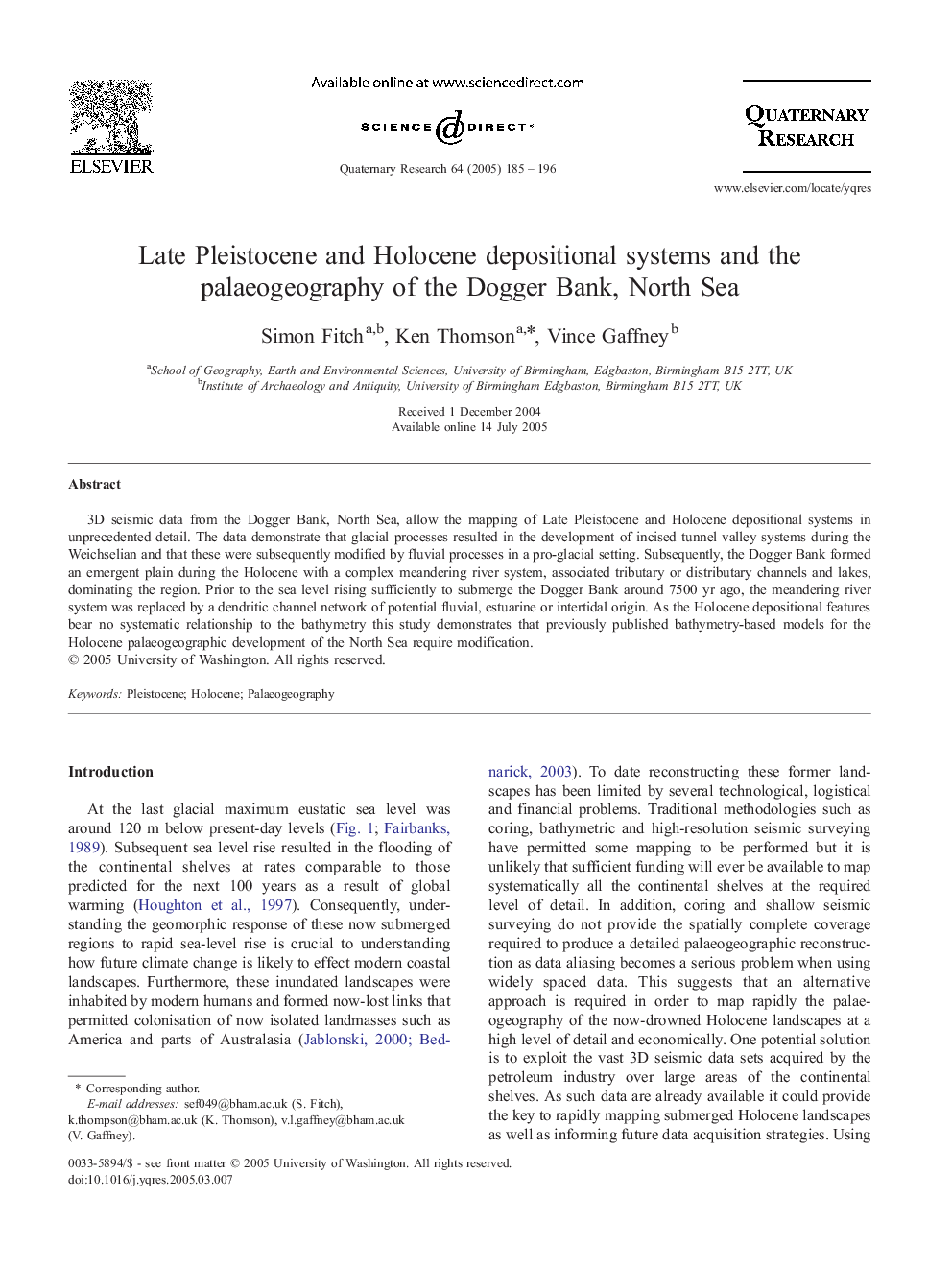| Article ID | Journal | Published Year | Pages | File Type |
|---|---|---|---|---|
| 10501328 | Quaternary Research | 2005 | 12 Pages |
Abstract
3D seismic data from the Dogger Bank, North Sea, allow the mapping of Late Pleistocene and Holocene depositional systems in unprecedented detail. The data demonstrate that glacial processes resulted in the development of incised tunnel valley systems during the Weichselian and that these were subsequently modified by fluvial processes in a pro-glacial setting. Subsequently, the Dogger Bank formed an emergent plain during the Holocene with a complex meandering river system, associated tributary or distributary channels and lakes, dominating the region. Prior to the sea level rising sufficiently to submerge the Dogger Bank around 7500 yr ago, the meandering river system was replaced by a dendritic channel network of potential fluvial, estuarine or intertidal origin. As the Holocene depositional features bear no systematic relationship to the bathymetry this study demonstrates that previously published bathymetry-based models for the Holocene palaeogeographic development of the North Sea require modification.
Keywords
Related Topics
Physical Sciences and Engineering
Earth and Planetary Sciences
Geology
Authors
Simon Fitch, Ken Thomson, Vince Gaffney,
